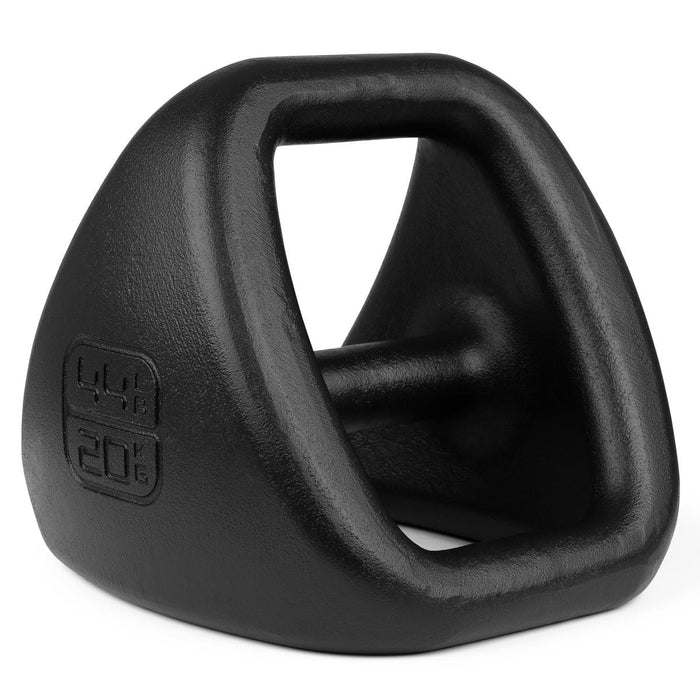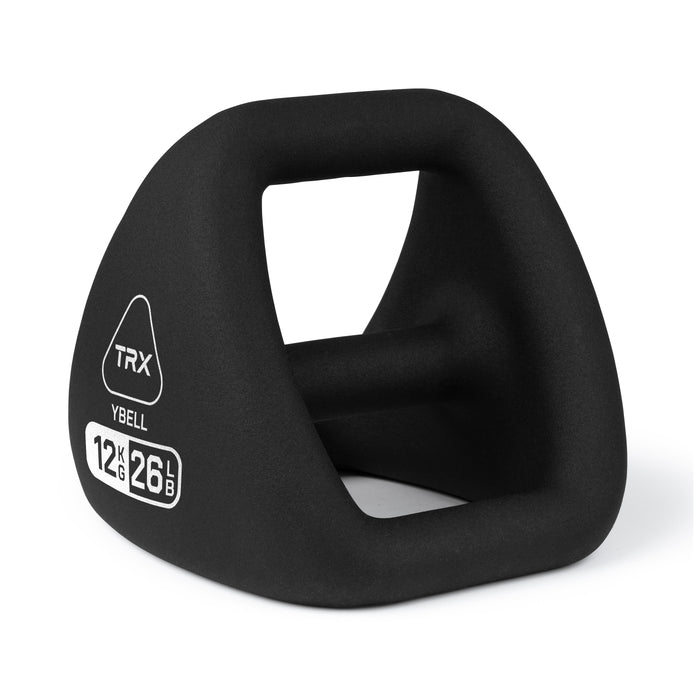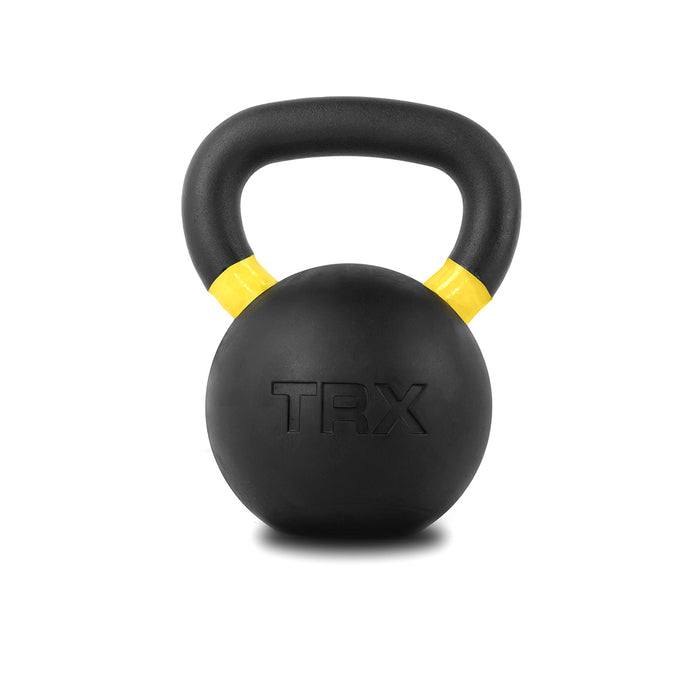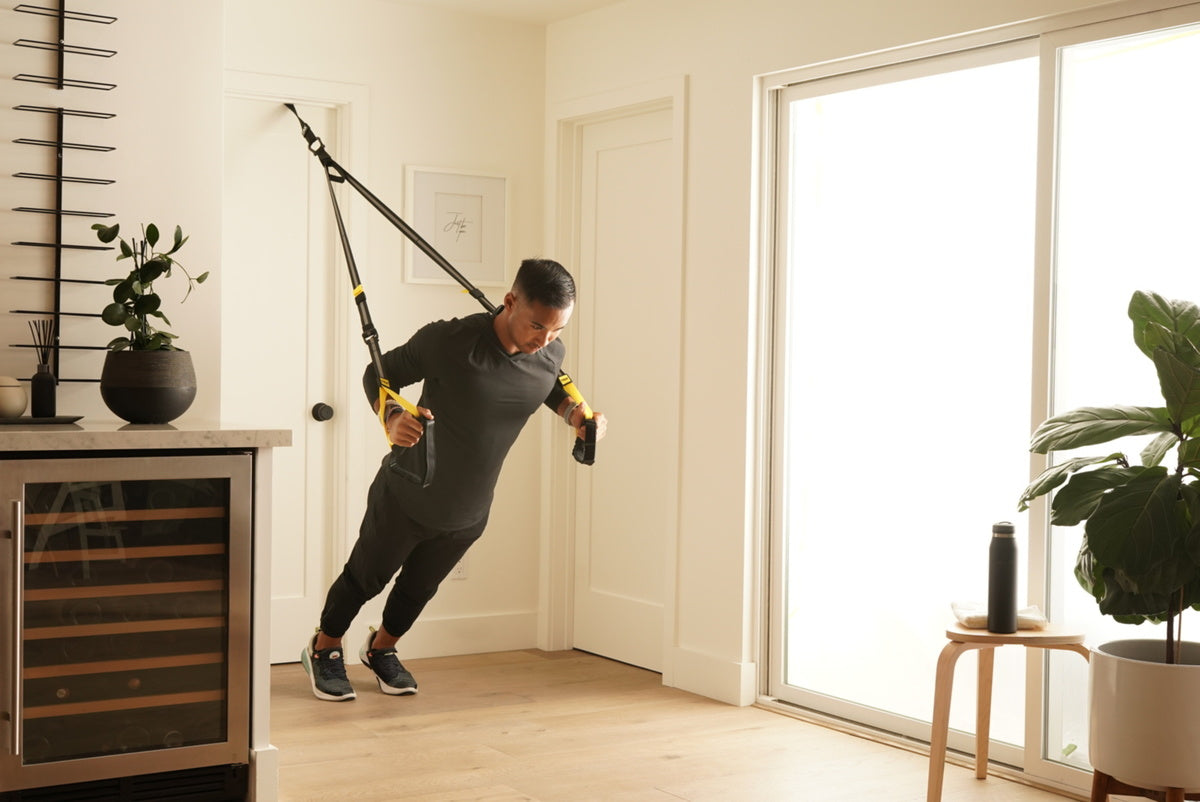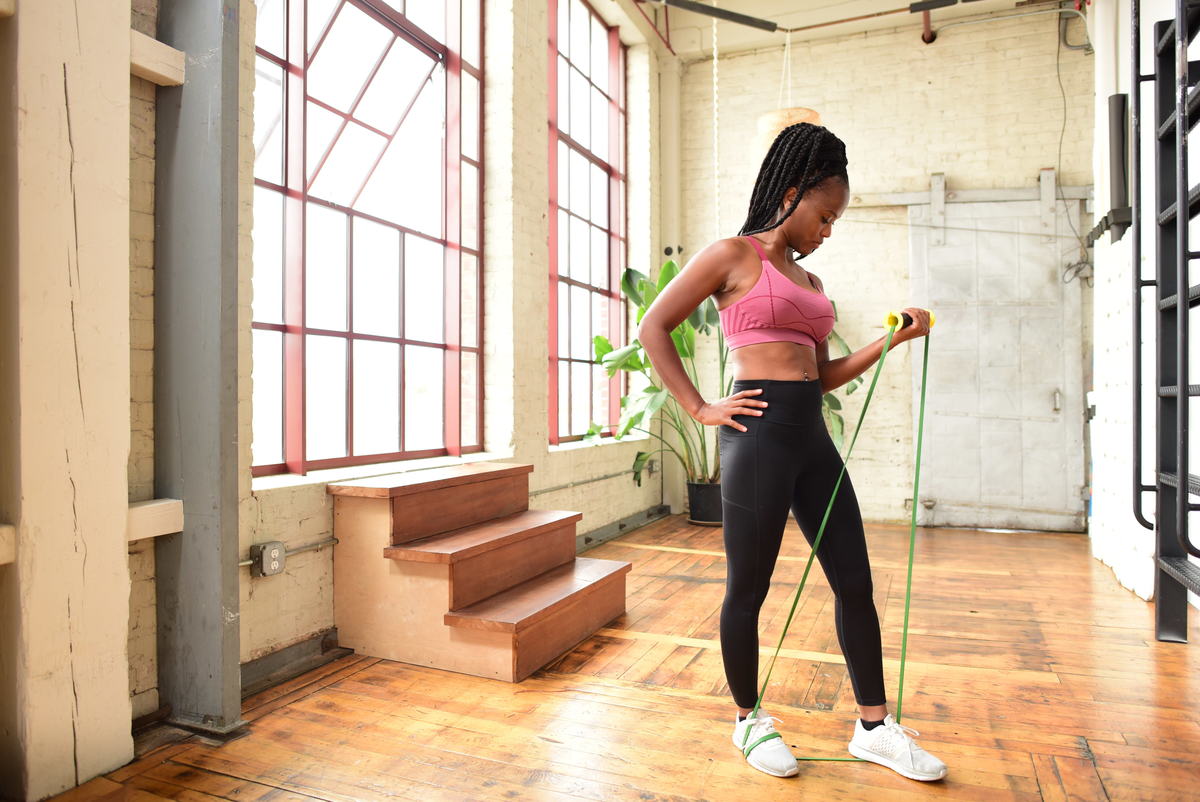What comes to mind when you hear the term ‘functional training’? Crossfit and cable rows? Flipping tires and pulling sleds?
Yes, those are functional exercises. But believe it or not, so are planks. And sit-ups. And push-ups.
Push-ups are actually far more complex than most people would think. It's a compound movement that recruits multiple muscle groups simultaneously. Push-ups build your core stability and hip strength and require muscle coordination.
Whether you're new to working out or just new to functional training, there really are functional exercises for any experience level to help you reach your health and fitness goals. This blog will dig into what functional exercises are and their benefits. And I'll share some tremendous full-body functional dumbbell exercises you can try at home (or you can do them as bodyweight exercises). Let's dig in!
What are Functional Exercises?
Functional training is a style of strength training that aims to enhance your performance in sports, physical activities, and everyday tasks. It focuses on compound exercises that engage multiple muscles and prioritize the development of core strength and stability.
What sets functional exercises apart is their ability to replicate movements commonly encountered in daily life, such as squatting, climbing, pushing, pulling, hinging, twisting, carrying, lifting, and reaching. It's worth noting that many functional exercises also promote mobility. By incorporating functional training into your routine, you can improve your body's movement capabilities and overall functionality.
Some key features of functional exercises are that they:
- Recruit several muscle groups at the same time
- Work your full range of motion
- Involve multiplanar movements
- Include core strength and stability training
- Integrate your fundamental motor skills:
- Strength
- Endurance
- Mobility
- Coordination and balance
- Speed
6 Benefits of Functional Training
Some benefits of functional training include:
- Increases Your Mobility — Training based on your daily movement patterns means your joints are going through their full range of motion, which helps you build muscle strength across your full range of motion.
- Improves Your Athletic Performance — Functional exercises help you build full-body strength and stability, making you more agile and enhancing your athleticism.
- Builds Functional Strength — Building muscle through functional training improves the way you perform everyday activities like moving furniture, climbing stairs, carrying your kids, picking up groceries, opening doors, or pushing shopping carts.
- Reduces Your Risk of Injury — Functional exercises improve your muscle strength, stability, and balance, which makes you more resistant to injuries like muscle strains and tears.
- Increases Your Calorie Burn — Functional exercises can burn more calories than traditional strength exercises. That's because functional movements use more muscles, meaning you're burning more calories and increasing your post-workout fat oxidation and energy expenditure.
- Trains Your Full Body — Rather than training in isolation, functional exercises train the muscles of your body to work as a whole so that different muscle groups can work together smoothly. That’s everything from major muscle groups like your glutes and abdominals down to your stabilizer muscles (which are often forgotten in other forms of training).
What Type of Equipment Should I Use for Functional Training?
You don’t need fancy equipment for functional training. In fact, when you first start, it’s a good idea to focus on bodyweight exercises and get used to the movements and make sure you have a full range of motion.
But if you’re planning to buy some functional fitness equipment for your home gym, here are some items you might want to consider:
You don’t need fancy or expensive equipment to do functional exercises. In fact, it’s a good idea for anyone new to functional training to start with bodyweight exercises to get used to the movements and focus on their full range of motion.
But, if you’re planning to buy functional fitness equipment for your home gym, here are some traditional fitness tools for you to consider:
- Kettlebells
- Plyometric (plyo) box
- Barbell + plates
- Resistance bands
- Dumbbells
- Medicine balls
- Slam balls
- YBell Arc, Neo, or Pro
- Push-up stands
Most commercial gyms will already have this equipment for you to use – try your best to avoid using isolation machines as you want to focus on engaging multiple muscle groups at a time.
If you’re on a limited budget, dumbbells are plenty to get a good full-body workout with functional exercises. Let’s take a look at some simple dumbbell functional exercises!
6 Dumbbell Functional Exercises
- Sit-ups
- Push-ups
- Side plank
- Knee-to-chest walks
- Spiderman lunge
- Inchworms
- Frog squats
Many people assume dumbbells are only for training your biceps. However, many full-body functional exercises with dumbbells target your arms, chest, core, glutes, and legs. Below are just a few you can try out.
1. Bent Over Rows
Targeted muscles: Biceps, pectoralis major, teres major and minor, latissimus dorsi, middle and low trapezius, rhomboids, posterior deltoids, core, and spinal erectors
Bent-over rows are an excellent upper-body functional exercise for strengthening your posterior chain. This movement explicitly works the muscles between your shoulder blades (rhomboids), which is vital for improving your posture and coordination of your upper-body muscles.
How To Do Bent-Over Rows With Proper Form:
- Start from a forward-leaning stance: Your feet will be shoulder-width apart with a slight bend at the knees.
- Keep your back straight, and hinge your torso until it’s almost perpendicular to the ground.
- Your arms will hang in front of your legs, slightly wider than shoulder-width apart. Hold dumbbells of equal weight in each hand, with your palms facing in. This is your starting position.
- Bend your elbow and pull or row the dumbbells toward your chest, pausing at the top of the movement. Your legs, torso, and chest will remain still in the starting position.
- Reverse the direction with control and return to the starting position. This is one rep.
- Repeat for 12 to 15 reps.
Pro Tips:
- If you have difficulty keeping your body from rotating, try placing your head on the end of an inclined weight bench.
- You can also perform bent-over rows face-down on a 45-degree bench, flat bench, or an inverted row with a barbell rack for more complex variations.
- If you’re performing this movement with a YBell, you can use a center grip to mimic a dumbbell for better balance. However, if you’re comfortable with the movement and want to give your lats an extra challenge, try using an outer grip to mimic a kettlebell.
2. Jump Squat
Targeted muscles: Deltoids, core, quadriceps, hamstrings, glutes, and the gastrocnemius and soleus (calf muscles)
Jump squats are a great bodyweight functional exercise that can add a cardio element to your workout. By combining a plyometric component (jumps) with a squat, you’ll train the fast-twitch fibers in your lower-body muscles for explosive strength movements. This lower-body functional exercise is beneficial for runners.
How To Do a Jump Squat:
- Stand tall with your feet shoulder-width apart, with a slight bend in your knees. Grip the floor with your feet and keep your weight evenly distributed.
- Keep a neutral spine and tuck your chin. Keep your arms by your sides with a slight bend in your elbows. Pre-tension your shoulders and hips, and engage your core. This is your starting position.
- Engage your glutes, push your hips back, and bend your knees to load your posterior chain. Quickly lower down into a squat, stopping just above parallel. Simultaneously bring your hands behind your body and maintain an upright chest position.
- Begin your jump by extending your knees and hips and explosively pushing through the ground. Swing your arms forward as you straighten your legs.
- Your arms should be above your head, and your legs should be straight at the top of the jump.
- Land softly on the balls of your feet with your knees slightly bent. Immediately lower down into a squat to repeat the movement.
- Repeat for 12 to 15 reps.
Pro Tips:
- If this combination is difficult for your coordination, you can focus on the squat and jump movements separately until each feels comfortable.
- You can progress this exercise by holding a light free weight in each hand, such as dumbbells, YBell Arcs or YBell Neos.
3. Dumbbell Squat Press
Targeted muscles: Deltoids, shoulders, triceps, core, quadriceps, glutes, hamstrings, and the gastrocnemius and soleus (calf muscles)
The dumbbell squat press (AKA: dumbbell thrusters) is an explosive full-body functional dumbbell exercise that combines a squat with an overhead press. Thrusters are traditionally done with barbells, but dumbbells allow you to train muscles on both sides of your body to help improve muscle imbalances. This movement is especially popular with strength training and Crossfit workouts.
How To Do a Dumbbell Squat Press:
- Stand with your feet shoulder-width apart. Hold a set of dumbbells (or YBells, using a center grip) at your shoulders, with your palms facing each other. This is your starting position.
- Inhale as you engage your core, push your hips back, and bend your knees to drop into a squat. Go as deep as you comfortably can, preferably going below parallel.
- At the bottom of your squat, exhale and drive through your heels to reverse the squat, thrusting your body back to a standing position. Use your upward momentum to press both dumbbells up, fully extending your arms straight overhead.
- Bend your elbows and lower the weights back to your shoulders with control. This is one rep.
- Repeat for 10 to 12 reps.
Pro Tip:
Throughout this movement, keep your upper arms slightly above parallel with the floor so that your elbows are raised. This takes stress off your shoulders and further engages your core muscles.
4. Dumbbell X-up
Targeted muscles: Biceps, triceps, rotator cuffs, internal and external obliques, rectus abdominis, and transversus abdominis
The dumbbell X-up should be your go-to if you're looking for a functional core exercise with dumbbells. This movement adds a torso rotation to a classic sit-up, making it a transverse plane functional exercise to get your obliques fired up.
An exercise mat isn’t needed but can be helpful for added comfort.
How To Do a Dumbbell X-up:
- Lie on your back with your arms and legs extended at an angle, forming the shape of an X. Tuck your chin to lengthen your neck. Place a dumbbell near your right hand, sitting up, so the handle is perpendicular to the ground. This is your starting position.
- Inhale, bring your left arm over to your right side, and grab the dumbbell with both hands, bringing it to your right shoulder.
- Exhale, and engage your core to lift your upper body off the ground. Simultaneously, rotate your torso to bring the dumbbell from your right side to the outside of your left knee. Your legs should remain flat against the ground during this upward movement.
- Slowly reverse the movement to lower your torso back down and return the dumbbell back to the ground above your right shoulder. This is one rep.
- Repeat for 8 to 10 reps on each side, alternating sides as you go.
Pro Tips:
- If you’re struggling to keep your legs flat on the ground, try bending your knees (like you would for a classic sit-up) and focus on keeping your feet flat to the ground.
- Start slow and without a free weight to focus on your form. Don’t add the free weight until you become comfortable with the rotation on the upward lift. And remember to keep your core engaged each time you lift yourself off the ground.
5. Plank Dumbbell Drag
Targeted muscles: Core, obliques, trapezius, rhomboids, latissimus dorsi, and glutes
The standard plank is an excellent functional exercise for developing core strength. But if you want to kick it up a notch, the plank drag will turn the static hold of a plank into an active movement with resistance. This move engages your core while you pull a dumbbell from side to side, testing your balance, endurance, and upper-body strength.
How To Do a Plank Dumbbell Drag:
- Start in a high plank position, balancing on your palms and the balls of your feet. Your elbows should be directly under your shoulders and your hands slightly wider than shoulder-width apart.
- Your backside should form a straight line from your head to your ankles. Avoid rounding your back or dropping your hips. Place a dumbbell behind your left hand. This is your starting position.
- Exhale and engage your core as you reach your right hand across your body to grab the dumbbell. Inhale as you drag it back to your right hand’s starting position.
- Exhale and drag the dumbbell in a straight line down to your right leg. Inhale as you drag it back to your starting position.
- Next, exhale and slide the dumbbell to the left, bringing it under your left arm. Inhale as you drag it back to the starting position.
- Finally, exhale as you slide the dumbbell diagonally toward your left ankle while raising your hips into a pike (creating an inverted V shape). Engage your glutes to keep your hips from rotating. Inhale as you lower your hips and drag the dumbbell back to your starting position. This is one rep.
- Repeat for 8 to 10 reps on each side, alternating sides as you go.
Pro Tips:
- Focus on holding the flat plank position along your backside. This movement will challenge your balance, and your body will try to shift with each drag. I recommend starting with a medium to heavy weight, so you can do slow pulls and focus on your form.
- If you're struggling with the drag, practice a standard plank and work up to holding the pose for 15 seconds. From there, add a free weight, focusing only on the downward drag toward your leg. You can work your way up to adding in the side and diagonal drags or perform the movement with a single drag in any direction that feels comfortable for you.
- If you're using a YBell Neo or YBell Pro, start with the traditional center grip to mimic the dumbbell handle. Once you become comfortable with the movement, try dragging the YBell using the top grip for an added challenge to your balance.
6. Dumbbell Turkish Get-up
Targeted muscles: Trapezius, pectorals, rotator cuffs, deltoids, latissimus dorsi, core, glutes, quadriceps, hamstrings, glutes, and the gastrocnemius and soleus (calf muscles)
The Turkish get-up is a multi-part, multiplanar exercise that takes you from a lying to a standing position and back, all while holding a dumbbell perpendicular to the ground. It’s a full-body mobility exercise that targets all the major muscle groups, making it a perfect addition to your functional dumbbell full-body workout.
The Turkish get-up is traditionally performed with a kettlebell but can easily be adapted for using a dumbbell. However, I recommend trying this with just body weight first so you can focus on your form. Start with a small load when introducing free weights, working your way up to a heavy load.
This is the gear you'll need for the exercises below, as well:
How To Do a Turkish Get-up With a Dumbbell:
- Start on the ground in a fetal position on your right side. Hold a dumbbell in your right hand close to your body.
- Roll onto your back and extend your right arm, punching the dumbbell into the air with your elbow locked. Bring your right heel close to your butt. Keep your gaze on your right hand and the dumbbell.
- Push through your right heel and roll your body onto your left elbow. Get tall, keeping your left elbow bent at a 90-degree angle and your right arm perpendicular to the ground.
- Using your left palm, push the floor away and sit tall, keeping your gaze on the dumbbell.
- Keeping your palm on the ground, lift your torso up while simultaneously sliding your left leg behind you until your left hand, knee, and foot form a straight line.
- Hinge at your hip and sit on your left heel. Lift your left hand off the ground, bringing your body into a tall kneeling position.
- Now turn your gaze to look straight ahead while keeping your right arm perpendicular to the ground.
- Slide your left leg to straighten it behind you, bringing your body into a lunge position.
- Now stand up.
- Reverse these movements to bring your body back to the ground and in a fetal position. This is one rep.
- Repeat for 8 to 10 reps on each side, alternating sides as you go.
As mentioned, the Turkish get-up is traditionally performed with a kettlebell, keeping a neutral wrist to avoid strain from the weight. Many prefer this movement with a dumbbell to avoid that wrist strain.
Another alternative is to use a YBell, which has multiple handles and grips, allowing you to use it as both a dumbbell and a kettlebell for this (or any other) movement. When held by the center handle, the YBell mimics a dumbbell, and the weight is evenly distributed around your hand. When held by an outer grip, the weight is bottom loaded to mimic a kettlebell. However, the weight sits lower on your forearm, causing less wrist strain than your traditional kettlebells.
Pro Tip:
If you're new to functional or strength training, perform this exercise right after your dynamic warm-up but before any movements involving heavy weights. Your muscles will be warmed up, but you won't be too tired to think through each movement.
Get the Best Functional Training Equipment from TRX Training
As you can see, dumbbell exercises are an excellent option for building functional full-body strength. And dumbbells can be especially helpful compared to barbells or cable machines if you have limited space for organizing a home gym.
However, if you’re looking for home workout equipment that’s multifunctional, cost-effective, and saves space, you should consider YBells. The YBell is a compact, portable functional fitness tool that you can use for all your dumbbell, kettlebell, double-grip medicine ball, and push-up bar exercises. Its award-winning multiple-handle design offers unique grips that allow you to easily transition between movements and equipment, making it ideal for functional exercises.
If you're looking for more functional fitness exercises to improve your physical performance, download the TTC App to try free YBell & suspension trainer workouts.


